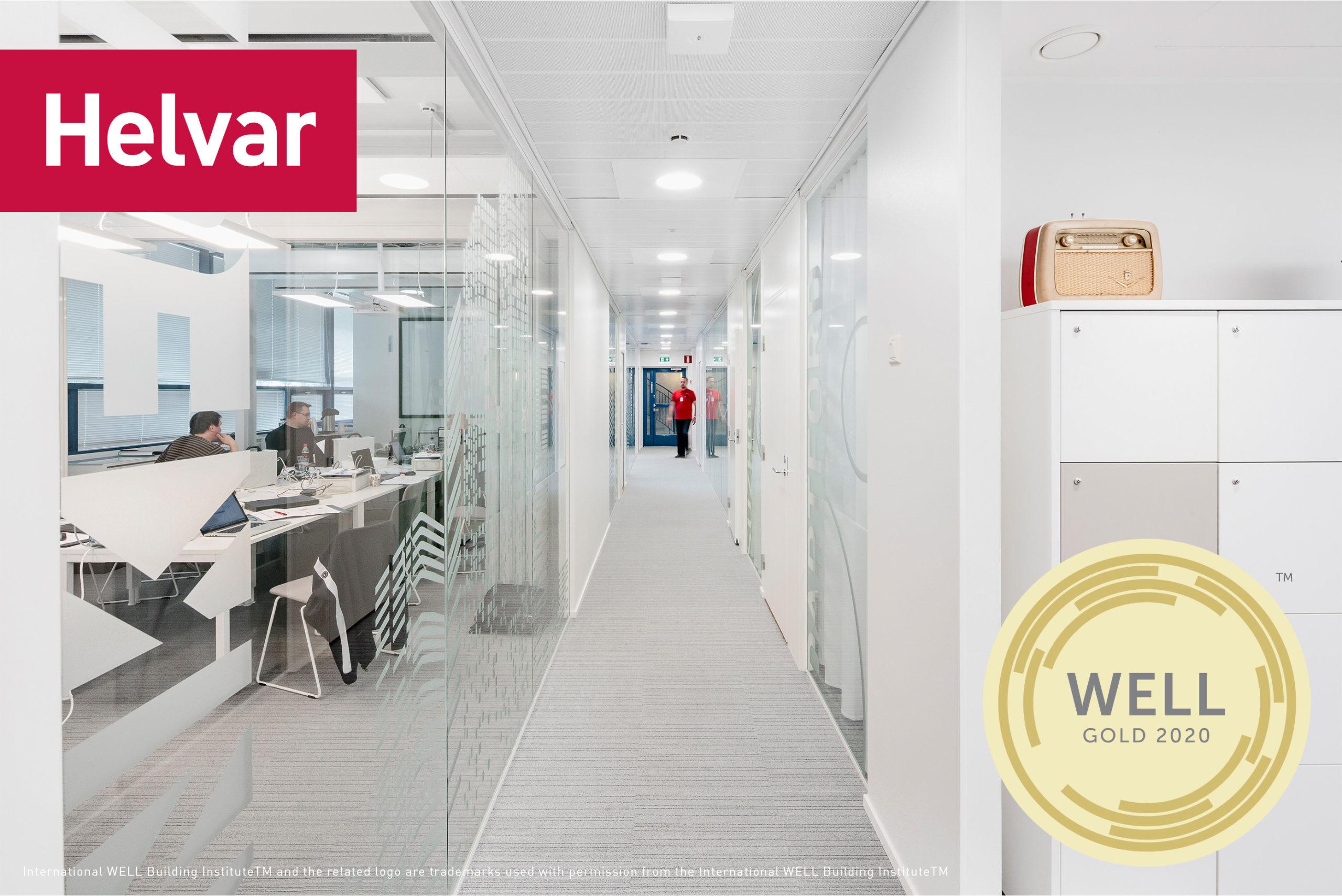WRITTEN BY HENRI JUSLÉN
Henri Juslén, Helvar’s Chief Future Illuminator, focuses together with his team on lighting, research, university co-operation, IPR, standards and AI-solutions. With over 40 years of life experience and over 20 years of lighting experience, Henri is a true veteran of the lighting industry. Henri holds a number of qualifications including a D.Sc in tech and the WELL AP credential.
Sleep is an important part of recharging the body, but did you know that the quality of your sleep might be influenced by the lighting at your workplace? The WELL standard requires the use of more and/or cooler light during the morning hours to enhance circadian rhythms. However, it is important to note that morning light is not the only important thing for human beings. We should also avoid high lighting levels and/or cool light during the evening hours. For example, many studies have highlighted the negative impact on sleep when looking at mobile phones or watching television shortly before bedtime as these screens emit blue light that can make it harder for you to sleep. Many mobile devices now have settings that can reduce the amount of bluish light entering the user´s eye. It is even more important to take care that there is no light in our bedrooms when we are sleeping. So, it would be wise to invest in black-out blinds which are designed to effectively stop the light from coming into the room.
Static lighting 24/7 is not good for us. Lighting conditions need variation. At Helvar’s WELL certified headquarters in Espoo, we aim to guarantee the correct lighting for people in several ways. Our Light over Time (LoT) feature enables tuning light levels and colour temperatures over time. Cooler white light with higher intensity can be implemented to help awaken the senses and help people prepare for the day ahead. There are some areas in the office where we have only changed the illuminance, and not the colour temperature. This is a suitable solution when lighting design has been done in a way where there is something to control on top of the minimum maintained values. We have also taken seasonal differences into account. For instance, SAD (seasonal affective disorder) is more common during the wintertime, so, it is logical to give people even more artificial light during the darker periods to counter these effects.
Lighting is more than just lighting control. You need to have the correct type of luminaires and enough “installed” light. Even good luminaires and great lighting control might not be enough. Since circadian effects are only received if light reaches our eyes, we need to also think about the colour of surfaces in a room. Bright colour workstations, like we have at our Helvar offices, allow more reflected light to reach our eyes. So, although good lighting supports our wellbeing and circadian rhythms, there are several aspects that need to be considered.
The WELL standard also requires companies to inform and educate their personnel about the importance of good lighting. In companies that specialise in lighting or lighting control, you would imagine their employees to all be lighting experts, however, even in a lighting company, most people have their daily tasks to focus on, which is something other than lighting. Thus, at Helvar we are educating our own people regularly on the benefits of good lighting. And, even more importantly, we are repeating these messages to ensure all of our employees are aware.

